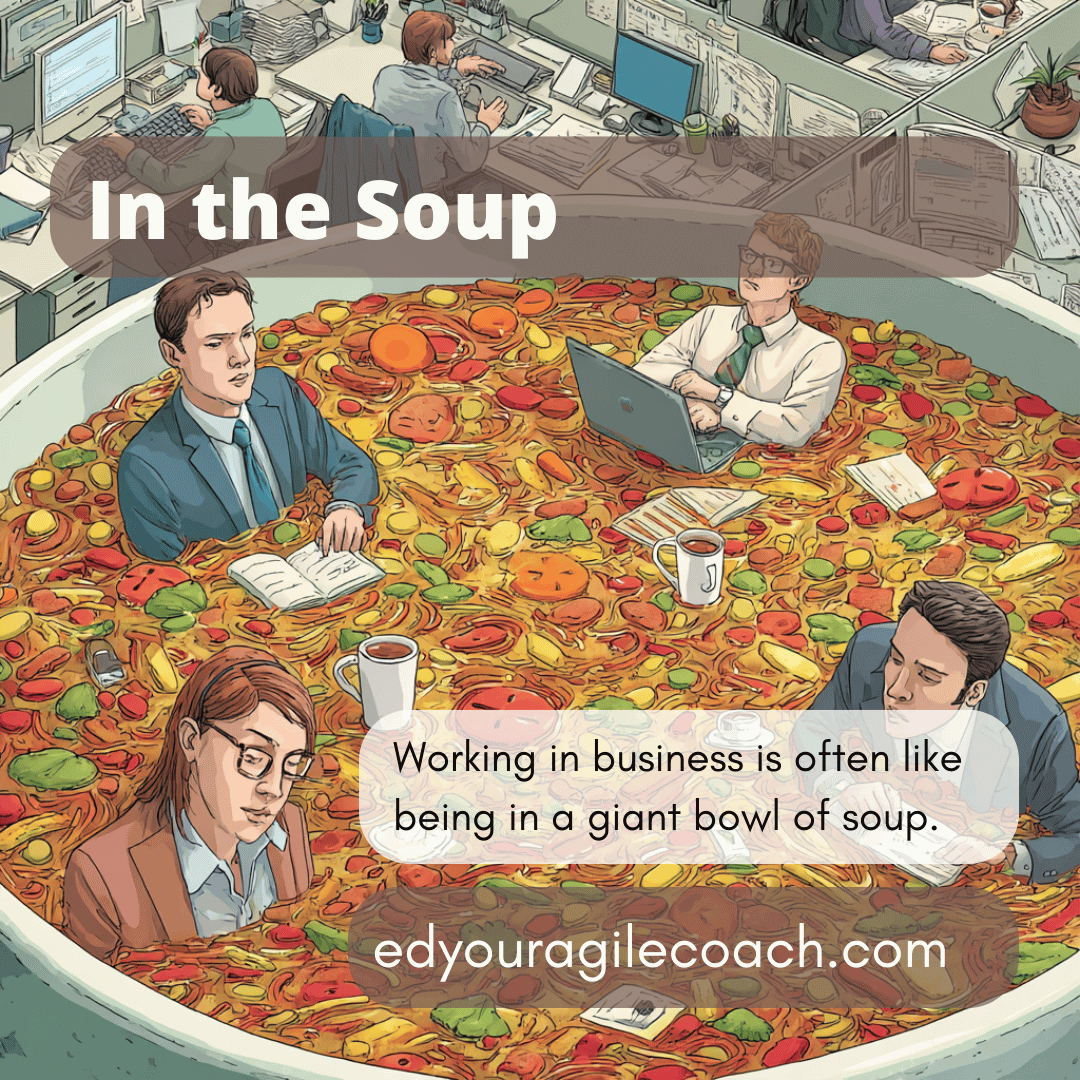Floating in Corporate Soup.

Online, you'll encounter a wide range of unique views and perspectives. As an agile coach, I am always looking for new ways to help my clients. This week, I stumbled upon a new retrospective approach, and it provided me with a fresh perspective on a common problem many people find in organizational change.
Angela Dugan, one of this blog's affiliates, discussed how she used a "circles and soup" retrospective to help her agile teams understand what they could control and what they had to endure. In this retrospective, three nested circles are drawn on a whiteboard. Each circle is large enough to accommodate plenty of sticky notes, and each zone covers a different zone of control the team has. The inner circle is the area of team control. The team makes all decisions, determines their approaches, and controls their ways of working. The middle ring is items that the team influences but does not have direct control over. These are things like corporate coding standards, dependency management, and release schedules. The outermost ring is called "the soup," and it represents things outside the team's control that they must endure or adapt to.
The metaphor of the organization's culture resembling a bowl of soup is very clever, as a business professional working in corporate America does feel like we are struggling to stay afloat in a giant bowl of soup. Each type of soup begins with a particular kind of broth. Vegetable soup starts with a tomato broth. Split pea soup begins with ham bones, and chicken soup starts with a chicken carcass. I liken these broths to different types of business. A healthcare company will be different from a manufacturing company. The initial broth is the beginning of the soup. Next come ingredients like vegetables, spices, noodles, or scraps of meat. Together, these components work to flavor the broth and give the recipe its unique flavor.
Often, I encounter business leaders who refuse to use salt in their recipes or skimp on ingredients, resulting in a runny gruel for customers. When confronted with this flavorless porridge, I have witnessed business leaders blame the result on a bad batch of unskilled chefs. Many failures I see in business are caused by people not paying attention to the ingredients of success and focusing more on the cost of each bowl of soup.
As uncertainty increases in the business world, we are seeing plenty of people attempting to create "stone soup." The story of stone soup originates from European folk tales. A peasant has nothing to eat, so he gathers some stones from a nearby field to trade with merchants, offering to make stone soup. Throughout the story, he obtains a chicken, some vegetables, and parsley for flavor, and makes the stone soup. It is a big hit with the merchants who pay him a few copper fathings, and they ask him to make another pot the next day.
The story of stone soup is a standard business tactic where owners often beg, borrow, or steal to create something. The story also presents a metaphor for poverty, where peasants must boil stones for nourishment. If your organization is stingy with ingredients and forcing everyone to make stone soup, it might be time to work somewhere else. Customers will also notice and patronize other businesses.
Working in a corporate environment feels dispiriting because we are paddling around in the "soup" composed of thousands of ingredients and brought to a raging boil by the pressures of the global economy. Understanding that reality is the first step we need to take before we can make lasting change. Now pass the salt.
Until next time.




Comments ()